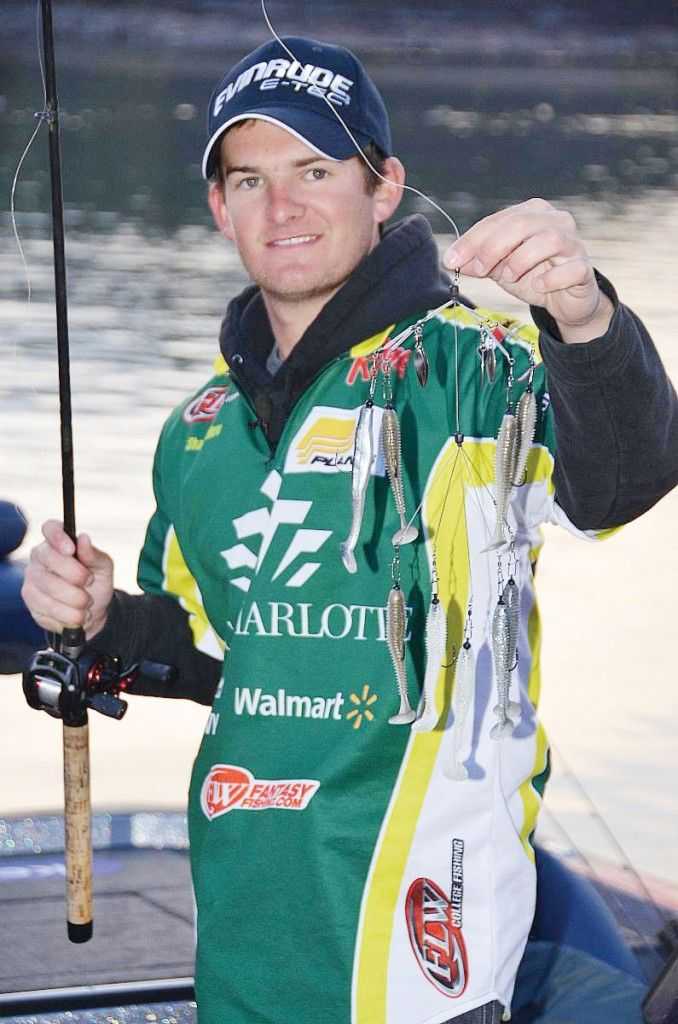
By: Capt. Craig Price
These days I can’t think of any topic I get more questions about than Alabama rigs. In case anyone is still not familiar with A-rigs, they are devices that allow an angler to throw multiple lures with a single cast.
I’ve used A-rigs in limited casting and trolling applications, but I don’t consider myself to be an expert on the topic. So I consulted Shane Lehew, who is a young, accomplished pro bass angler and guide from Charlotte, N.C. to better learn when and how to use Alabama rigs. In addition to being well versed in fishing these devices, Shane and his father operate a company, www.shanesbaits.com, which manufactures a line of multi-arm rigs and sells jigs and other accessories.
Shane’s tips on how to best fish these castable umbrella rigs are summarized below.
- Keep the overall weight of the rig as light as possible. Try 1/16-ounce jig heads and paddle tail swimbaits that mimic the forage. Even with rigs that utilize five to nine jigs, the overall weight shouldn’t exceed 2 or 3 ounces.
- Jig heads with springs help hold the soft plastics in place and allow for weedless rigging.
- Shane typically fishes a 7-foot or longer heavy-action rod with 20-pound fluorocarbon line.
- The most widely effective opportunity to fish A-rigs is when casting to suspended fish focused on large schools of forage, an ideal scenario for fall and winter.
- Position the boat to allow casts that drop the rigs into the feeding zone. Try a medium-speed retrieve. A 2-ounce rig should fall about 1 foot per second.
- Adjust the speed or stop and start the rig to vary the presentation. Fish slowly as water temps fall below 50 degrees.
- Fish rigs slowly over brush and rock when the fish are deeper and less active. Try rigging the first layer of jigs weedless to minimize hang-ups.
- A-rigs can also be cast into shallower water along banks and around piers. The weedless setup is useful here.
If fluorocarbon line is too expensive, try 20 to 30-pound braid. I’ve had success using really small bodies like Lit’l Fishies. Fluke-type swimbaits may be more effective in winter due to their minimal swimming action.
Finally, a technique I’ve experimented with this fall around schools of hybrids is power reeling. Drop the rig to the bottom, tighten up your slack, then reel the rig vertically to the surface with a medium-fast retrieve. Apparently there’s something about the lures swimming up past a hybrid or striper’s nose that triggers a reaction strike. Keep a firm grip on the rod because the strikes are vicious, with multiple hookups not uncommon.
It amuses me that all my life I’ve learned and practiced stealthy, quiet approaches to catching fish. Small tackle and invisible leaders were among the measures paramount to success. Now we’re throwing antennas that sound like bricks hitting the water. They have all kinds of visible metal arms, clasps and swivels. But they catch fish, often two or more at a time.
[easy-social-share]